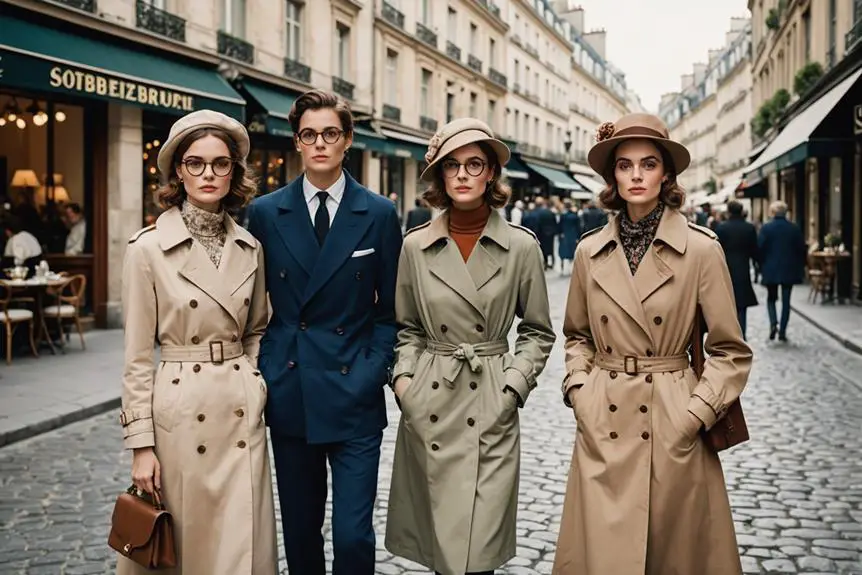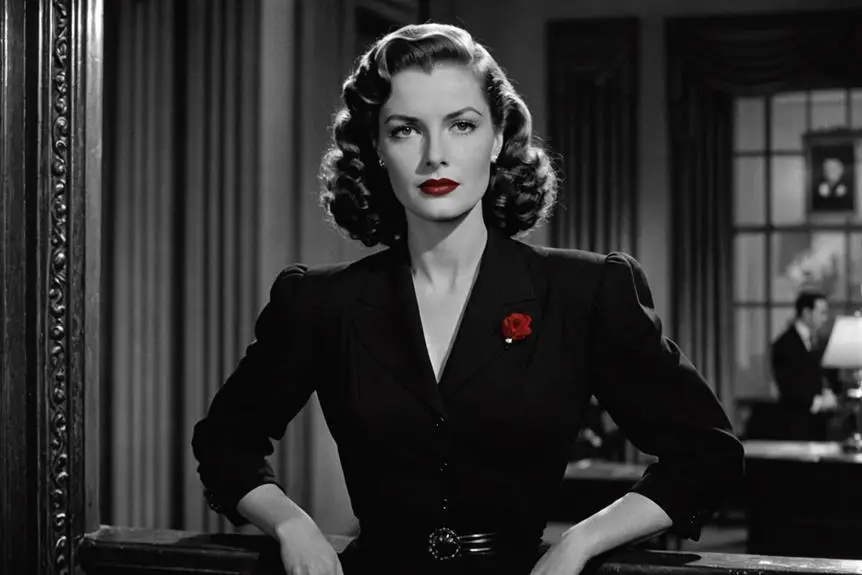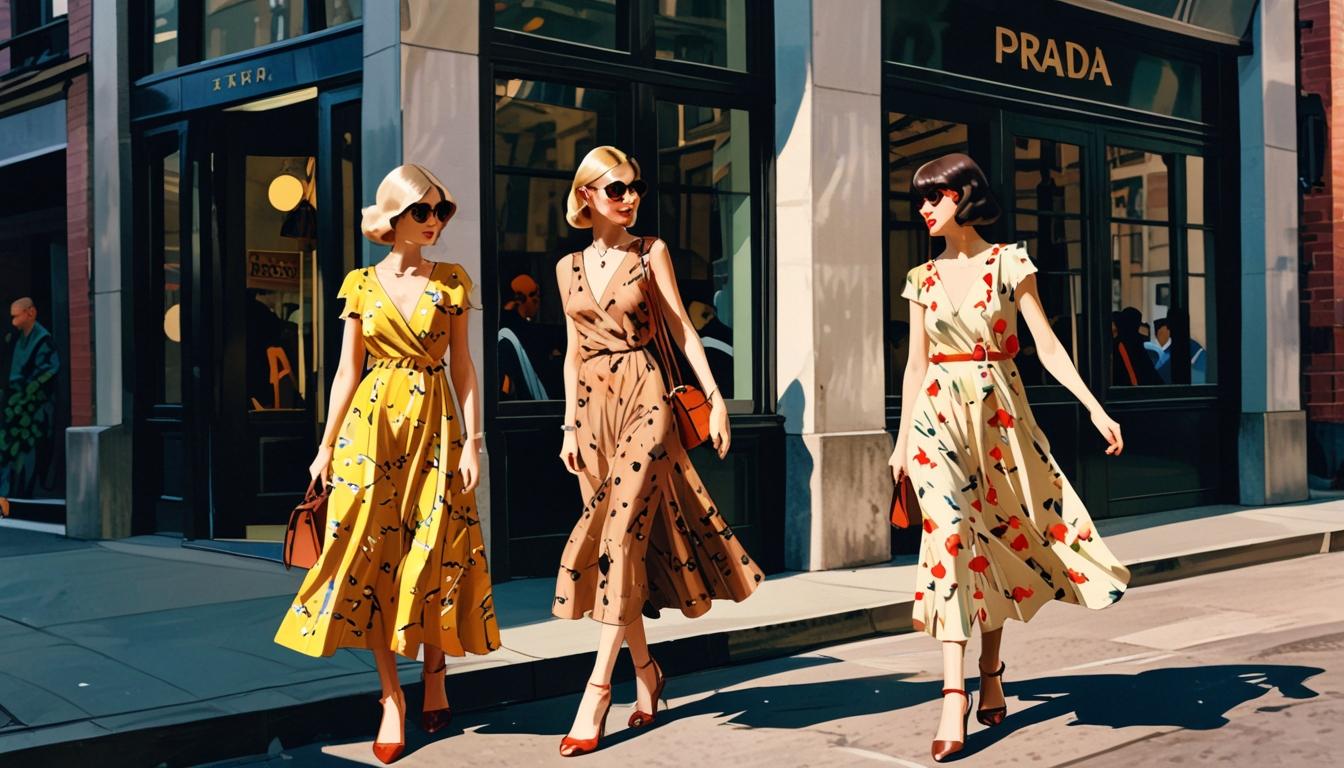In "The French Dispatch," you see a striking contrast between the whimsical flair of French fashion and the gritty reality of 1960s journalism. Each outfit serves not just as clothing but as a narrative device, reflecting the essence of its wearer. As you explore the intricacies of Milena Canonero's costume design, you'll discover how these vibrant ensembles evoke nostalgia while also shaping contemporary style. What does this blend of past and present reveal about our own fashion choices today?
Overview of the Film
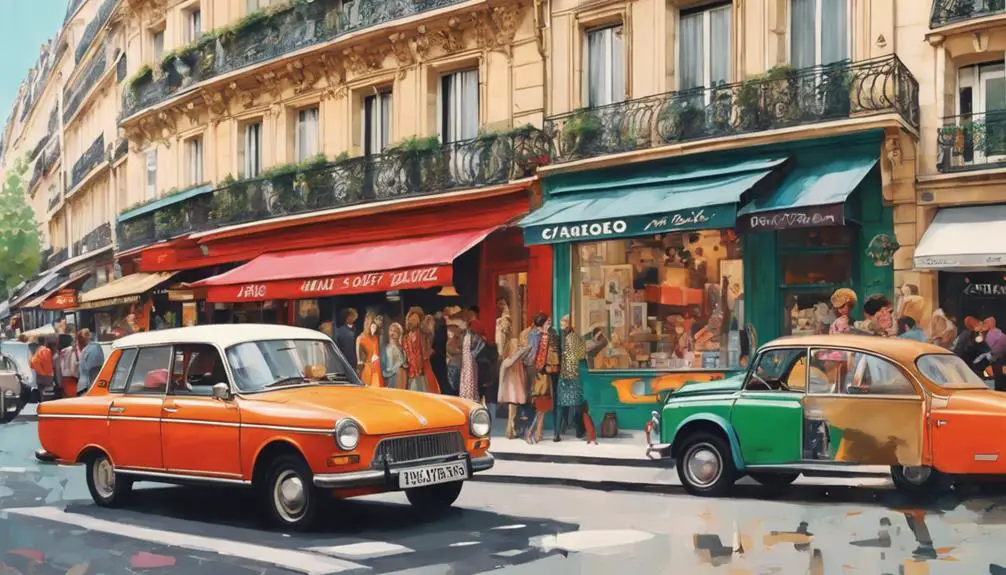
Set against the vibrant backdrop of the late 1960s, "The French Dispatch" immerses you in the whimsical world of a fictional newspaper in the town of Ennui-sur-Blasé. Directed by Wes Anderson, this anthology film offers a delightful exploration of journalism, combining comedy, romance, and mystery.
You'll find yourself captivated by the stories that unfold, featuring a star-studded ensemble cast that includes the likes of Bill Murray, Tilda Swinton, and Timothée Chalamet. Each character brings their own flair, contributing to the film's rich tapestry of narratives.
Anderson's cinematic vision shines through in every frame, showcasing his signature symmetrical style and expressive color palettes that elevate the visual storytelling. The film serves as a heartfelt homage to French cinema and culture, celebrating the essence of 20th-century journalism.
Released on October 19, 2021, "The French Dispatch" not only entertains but also invites you to reflect on the impact of storytelling and the art of writing. As you navigate through its delightful tales, you'll appreciate the meticulous craftsmanship that makes this Wes Anderson film a true feast for the senses, leaving you enthusiastically anticipating each character's journey.
Costume Design Insights
Although "The French Dispatch" captivates with its storytelling, the costumes play a critical role in bringing the characters to life. Led by Oscar-winning costume designer Milena Canonero, the film brilliantly blends French elegance with New York journalism aesthetics, creating a unique visual style that enhances the narrative.
Each character's costume reflects their personality and journey, showcasing Milena's meticulous attention to detail that perfectly aligns with Wes Anderson's cinematic flair. The natural palette and varied textures used in the costumes enhance the storytelling, allowing you to connect more deeply with the characters.
For instance, Tilda Swinton's striking orange kaftan stands out as a bold statement piece, while Owen Wilson's humorous beret-and-pullover ensemble adds a playful touch, particularly in the film's black-and-white scenes.
Collaborations with high-end fashion houses like Prada and Louis Vuitton further elevate the costumes, continuing Anderson's trend of integrating fashion into his films. Every outfit not only serves as a visual delight but also enriches the character arcs, making the costume design an indispensable aspect of "The French Dispatch."
You can't help but admire the creativity and craftsmanship that went into each ensemble!
Iconic Character Outfits
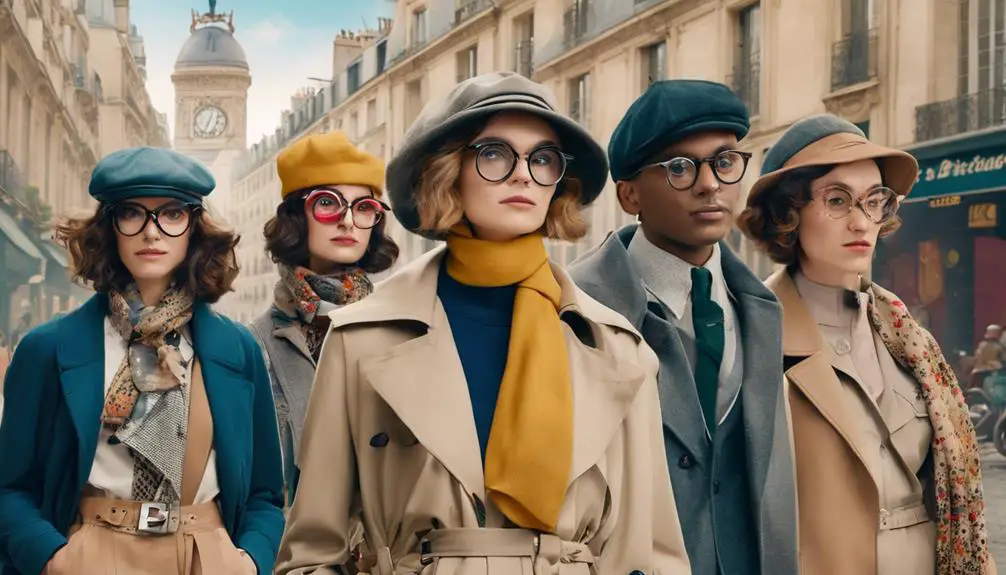
The outfits in "The French Dispatch" aren't just clothing; they're vivid expressions of each character's identity and narrative arc.
Take Herbsaint Sazerac, for example, whose humorous aesthetic—complete with a beret, brown knit pullover, green corduroys, and gold socks—perfectly captures his carefree spirit.
Then there's JKL Berensen, portrayed by Tilda Swinton, who dazzles in a striking bright orange kaftan adorned with gold embroidery and bold jewelry, showcasing her artistic flair and status as a fabulous writer.
Zeffirelli, played by Timothée Chalamet, embodies the studious yet rebellious nature of a student revolutionary with his relaxed grey suit, Oxfords, and wild hair, while Juliette, portrayed by Lyna Khoudri, rocks a 20th-century schoolgirl outfit paired with a motorcycle jacket, representing her challenge to authority and rebellious Parisian aesthetic.
Finally, Arthur Howitzer Jr., played by Bill Murray, dons a muted autumnal palette that reflects a dark academia style, encapsulating the essence of a 20th-century journalist.
Each outfit tells a story, drawing you into the vibrant world of Wes Anderson's film and making you appreciate the artistry behind every detail.
Themes Reflected in Fashion
Fashion in "The French Dispatch" vividly reflects the film's central themes of identity, creativity, and nostalgia. Through meticulous costume design, each outfit not only showcases a character's personality but also enhances the film's visual storytelling.
For instance, J.K.L. Berensen's vibrant orange kaftan symbolizes her artistic spirit, while Herbsaint Sazerac's relaxed menswear captures his carefree essence. The blend of French elegance and New York journalism aesthetics is evident in Timothée Chalamet's relaxed grey suit and Lyna Khoudri's rebellious schoolgirl look, complete with a motorcycle jacket.
Color palettes play an essential role, too; the muted autumnal tones worn by Bill Murray's character evoke nostalgia and romanticism, reflecting the charm of 20th-century journalism.
Each wardrobe choice serves as a vital piece of the narrative puzzle, emphasizing themes of order and chaos, like Lieutenant Nescaffier's sharp chef's whites amid the film's delightful disorder.
Fashion Trends From the Film
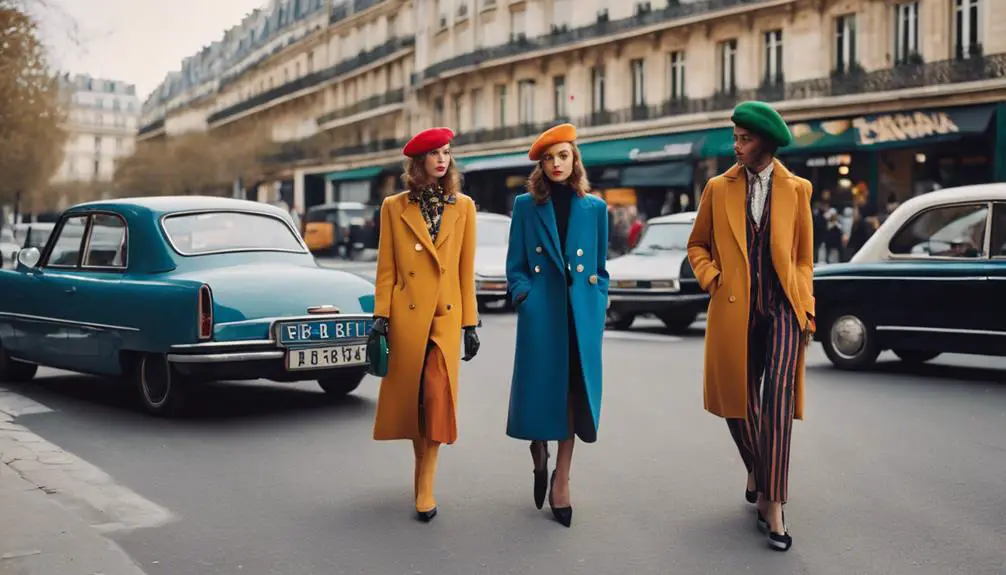
Brimming with vibrant colors and sharp tailoring, the costumes in "The French Dispatch" set the stage for a rich tapestry of fashion trends that reflect both French elegance and classic journalistic styles. Designed by Milena Canonero, these costumes showcase a delightful blend of creativity and style that will inspire any fashion enthusiast.
You'll notice key fashion trends like berets and sweater vests, which not only enhance the characters' individual styles but also contribute to their narratives. For instance, Herbsaint Sazerac's laidback menswear resembles post-World War II French athleisure, emphasizing practicality while radiating vibrant colors.
Then there's Tilda Swinton's character, JKL Berensen, who embodies artistic flair in her striking orange kaftan adorned with gold embroidery. This costume perfectly illustrates how fashion can mirror a character's creative personality.
On the other hand, Timothée Chalamet's Zeffirelli struts through the film in a relaxed gray suit paired with wild hair, blending classic elegance with a rebellious spirit.
These fashion trends from "The French Dispatch" not only captivate but also invite you to explore your own style, proving that costumes can be a powerful form of expression.
Cultural Significance of Costumes
Wes Anderson's "The French Dispatch" showcases costumes that serve as a visual homage to 20th-century journalism and French culture, enriching the film's thematic depth. Designed by Milena Canonero, these costumes brilliantly blend the elegance of French fashion with the gritty charm of New York journalism, creating a vivid representation of the era.
You'll notice how the vibrant colors and textures enhance character portrayal, revealing their individuality and roles within the narrative. Vintage fashion, much like the iconic designs of Chanel's legacy, plays an essential role in evoking nostalgia and style.
Each character's wardrobe tells a story, with standout pieces like Tilda Swinton's striking orange kaftan and Owen Wilson's whimsical beret highlighting their unique personalities. This meticulous attention to costume detail not only elevates the film's visual storytelling but also reinforces Wes Anderson's signature style, known for its symmetry and retro charm.
The cultural impact of the film's fashion choices encourages you to embrace a playful approach to personal style, influencing contemporary fashion trends and seasonal wardrobes.
Character Style Analysis
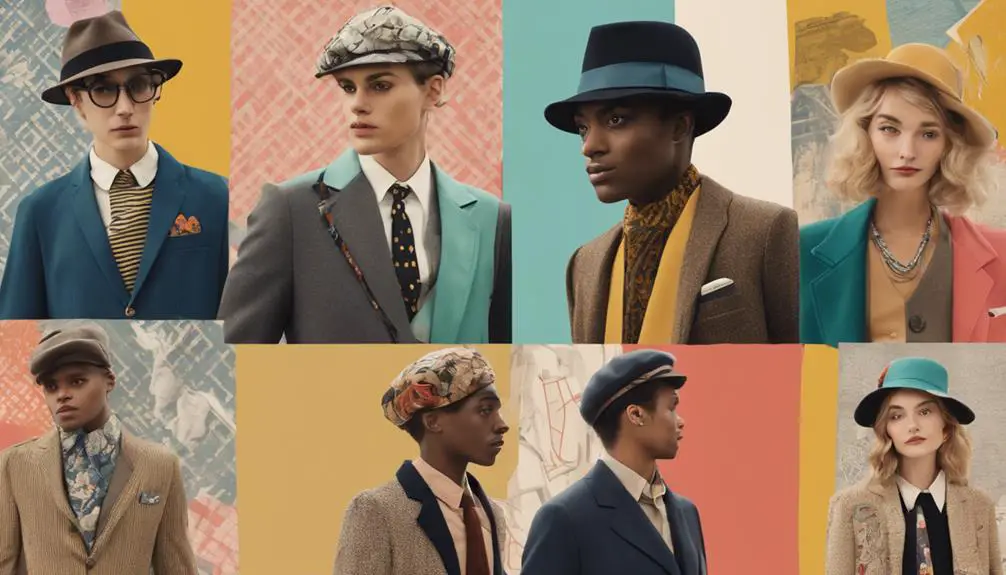
In "The French Dispatch," each character's wardrobe not only reflects their distinct personalities but also enhances the film's narrative.
Take Herbsaint Sazerac, for instance; his humorous aesthetic, complete with a beret, brown knit pullover, and green corduroys, encapsulates his carefree and whimsical nature.
On the flip side, JKL Berensen, played by Tilda Swinton, dazzles in a striking bright orange kaftan adorned with gold embroidery, showcasing her artistic flair and confidence as a writer.
Then there's Zeffirelli, portrayed by Timothée Chalamet, who rocks a relaxed grey suit and wild hair, perfectly embodying the studious yet rebellious spirit of a student revolutionary.
Lyna Khoudri's character, Juliette, stands out in a 20th-century schoolgirl outfit coupled with a motorcycle jacket, effortlessly representing her rebellious Parisian aesthetic while challenging societal norms.
Finally, Arthur Howitzer Jr., played by Bill Murray, sports a muted autumnal palette that captures the essence of dark academia, embodying the classic journalist look of the 20th century.
Through this character style analysis, you can appreciate how each outfit plays a vital role in storytelling, enriching your viewing experience.
Impact on Contemporary Fashion
Costume design in "The French Dispatch" has markedly influenced contemporary fashion, blending vintage aesthetics with modern elegance. Led by Oscar-winning designer Milena Canonero, the film showcases bold colors and tailored silhouettes that are enchanting fashion enthusiasts.
Outfits like Tilda Swinton's striking orange kaftan and Bill Murray's Ivy League-inspired attire have sparked a newfound interest in unique fashion choices, seamlessly mixing classic styles with contemporary flair. This resonates with the creative storytelling seen in Alexander McQueen's provocative runway shows, which also challenged traditional fashion narratives.
High-end fashion houses such as Prada and Louis Vuitton, renowned for their collaborations with Wes Anderson, have experienced a surge in demand for vintage-inspired pieces and tailored garments since the film's release.
The emphasis on character-driven fashion encourages audiences to embrace playful styles, making costume elements like berets and vibrant trousers trendy in everyday wear.
"The French Dispatch" contributes to the ongoing Wes Anderson trend in fashion, promoting an aesthetic that celebrates individuality, creativity, and a whimsical approach to personal style.
As you explore your wardrobe, consider incorporating these influences, and let the film inspire a fresh perspective on how you express your personality through fashion. You'll find that blending these elements can elevate your style to new heights!
Frequently Asked Questions
Where Does Wes Anderson Buy His Clothes?
Wes Anderson's style often reflects vintage clothing sourced from thrift shopping and unique finds. You can draw fashion inspiration from his costume design, incorporating similar pieces into your personal wardrobe for that whimsical flair.
What Does Wes Anderson Wear?
They say clothes make the man. You'll find Wes Anderson in tailored suits featuring signature colors, vintage inspirations, and quirky accessories, all reflecting his distinctive style and personal aesthetic that captivates audiences everywhere.
What Does Black and White Mean in French Dispatch?
In "The French Dispatch," black-and-white signifies French culture through artistic choices, enhancing cinematic symbolism. This aesthetic influence deepens visual storytelling, emphasizing color significance and allowing you to appreciate characters' complexities and the film's rich narrative layers.
What Does Ennui Sur Blase Mean?
You might think "ennui-sur-blasé" is just a quirky name, but it embodies existential boredom and emotional detachment, critiquing artistic expression through visual storytelling and Wes Anderson's unique cinematic style, blending charm with cultural commentary.
